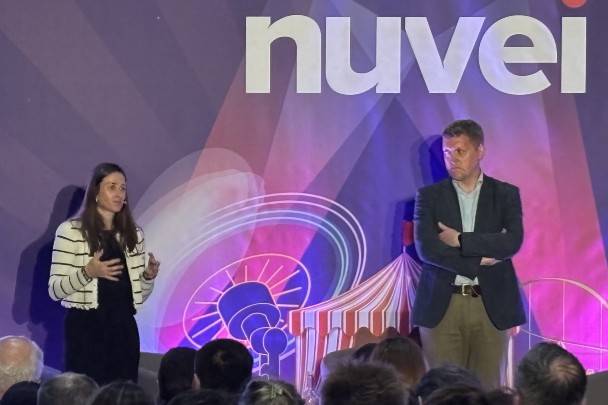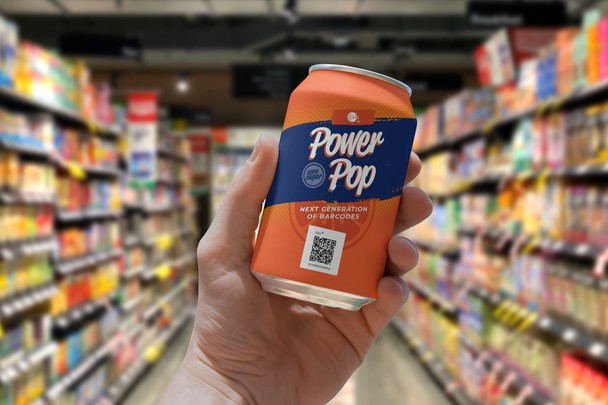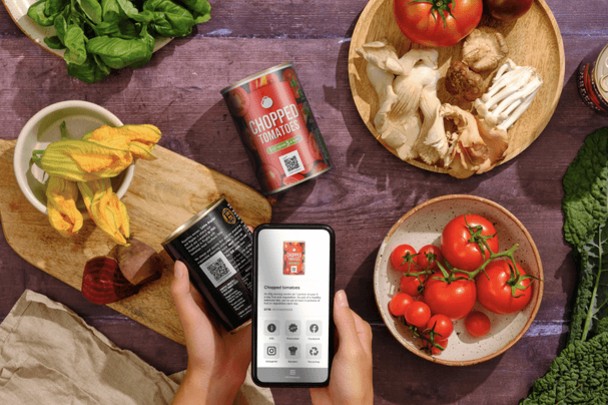April 17, 2025
The retail industry is on the cusp of its biggest transformation since the barcode first appeared over 50 years ago. What started as a way to speed up checkout queues is now evolving into something far more powerful: a global shift in how products are identified, traced and understood. At the heart of this change is the transition to the next generation of barcodes — QR codes powered by GS1, a technology designed to connect consumers, brands and supply chains like never before.
We recently attended the Retail Tech Show 2025, where Tesco revealed it is now actively trialling QR codes on its own-brand products as part of its transition to this next-generation system. We had the privilege of joining an insightful panel discussion exploring why QR codes powered by GS1 offer much more than a technical upgrade.
GS1 UK director of industry engagement, Iain Walker, took to the stage alongside Isabela De Pedro, supply chain development & change director at Tesco, to shed light on just how big this shift is.
A world of possibilities
Iain opened the discussion by putting the transition in historical context: “The barcode is scanned over 10 billion times a day, but what really matters is the number behind it,” he explained.

Isabela De Pedro and Iain Walker at the Retail Tech Show
“That number, the Global Trade Item Number (GTIN) is the key to a global system of connected, trusted data. With QR codes, every scan can unlock more than a price. It can unlock confidence, clarity and connection.”
Unlike traditional linear barcodes, QR codes powered by GS1 can embed both static and dynamic data, linking physical products directly to digital sources. This opens a world of possibilities, not only for improving traceability and transparency, but also for connecting supply chain operations with real-time consumer interactions.
“Think of it like the shift from landlines to smartphones,” he said. “Barcodes used to tell you one thing. QR codes, when built on GS1 standards, can tell you everything — and update in real-time.”
Tesco trials in the real world
Tesco has emerged as one of the UK’s most prominent early adopters. As Tesco’s supply chain development & change director, Bella shared insights from the grocer’s initial trial, which started in early 2024 with just two own-brand products and has since expanded to 12 lines across fresh, chilled and ambient categories.
“The results are already showing promise,” she said. “We can now tell not just how many of a product are on shelf, but how many are nearing expiry. That’s a huge leap for waste reduction, replenishment planning and customer satisfaction.”
According to Bella, the project involved more than simply changing the packaging. “Traditional barcodes are pre-printed in bulk. With QR codes, you have to print in-line, on every item, during production. It’s operationally complex — but the benefits make it worth it.”
Tesco has deliberately tested different packaging types, materials, suppliers and geographies. “It’s about learning where the pain points are,” she said. “Because if this is going to scale, we need to understand how it works in every corner of our supply chain.
“We're already seeing how much we can unlock, from better stock management to reducing waste and helping customers make more informed choices at the shelf.”
According to Isabela Tesco has identified three core benefits: better operations, stronger supplier relationships and deeper customer engagement.
With real-time data, store teams can see not just what’s in stock, they get accurate visibility of which products are nearing expiry. “That granularity helps us tackle waste and improve accuracy,” she continued.
Engaging customers at shelf level
While the inventory gains are compelling, both Iain and Bella repeatedly highlighted the potential of QR codes to enable — and strengthen — direct relationships between brands and their consumers right at the shelf.

“We’ve never really had a proper way to talk to customers about individual products at the point of decision,” Bella said. “Now we do. This is our first real opportunity to speak to customers at shelf level, at the product level. We’re still exploring what that looks like, but the potential is huge.”
By scanning a QR code powered by GS1, customers can access sourcing information, nutritional content, allergen details, recyclability info, recipe suggestions, promotions and more. As Iain’s put it, “it’s a bridge between the physical and digital world — but on the consumer’s terms.”
He also emphasised the accessibility benefits. “For consumers with visual impairments or limited literacy, QR codes can deliver spoken product information or adjustable text sizes,” he said. “It’s a real win for inclusivity.”
However, Bella cautioned against trying to do everything at once. “There’s a real temptation to overload the experience,” she said. “We’re being careful to test what works, what’s useful, and how to avoid overwhelming the customer.”
Retailers aren’t alone and nor should they be
Though Tesco is an early adopter, Iain was keen to frame the transition as an industry-wide opportunity. “This isn’t just about Tesco, or GS1, or any one manufacturer,” he said. “It’s about a shared platform that benefits everyone in the supply chain — from producers to customers, regulators to recyclers.”
Over the past year, GS1 UK has worked closely with hundreds of businesses to support this transition. New research from our 60,000 strong membership confirms that momentum is building: one in ten UK businesses have already implemented QR codes powered by GS1, while a further third plan to do so within the next 12 months. More than a quarter of UK businesses are now aware that a second barcode revolution is underway.
The benefits are already clear. Our members tell us that QR codes are improving traceability, enhancing access to accurate product information, streamlining inventory management and simplifying sustainability reporting. Many describe the technology as a “game-changer”, allowing them to update product details dynamically without needing to reprint packaging.
What retailers should do now
The panel closed with a clear message: the shift to QR is no longer theoretical. It's happening now.
“This is a systemic opportunity,” Iain said. “It’s not just about Tesco, or any one brand. It’s about helping the entire ecosystem—retailers, regulators, suppliers, service providers—work together to deliver better outcomes.”

“Start experimenting now,” said Bella. “You don’t need to overhaul your entire packaging estate. Pick a few SKUs, pick some partners, and start learning.”
Iain agreed. “The technology’s ready. The standards are in place. The sooner you engage, the more value you’ll extract.”
For retailers facing rising customer expectations, complex regulations and the need for agile supply chains, that value may be impossible to ignore.
At the heart of this transformation is trusted, standardised data. “Whether you’re a multinational or an SME, the ability to communicate clearly and consistently matters,” Iain concluded. “The QR code is the entry point—but what’s behind it is what drives trust and value.”



